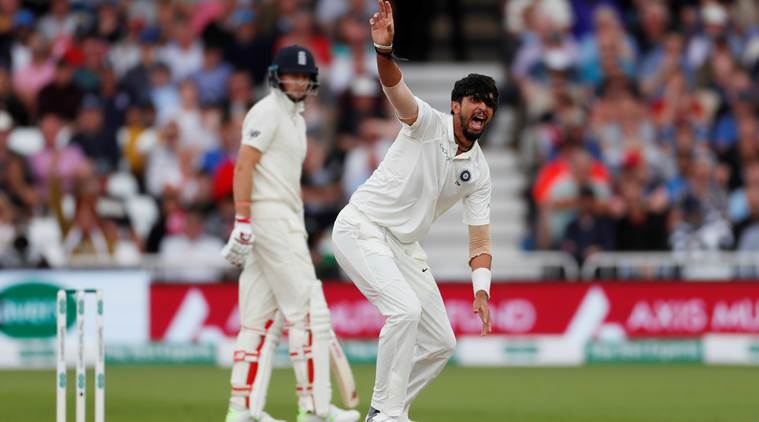 Ishant Sharma removed the England top order in Nottingham. (Reuters Photo)
Ishant Sharma removed the England top order in Nottingham. (Reuters Photo)
It was the pace of Ishant Sharma’s walk that convinced Jason Gillespie that things were clicking for the Indian bowler at Yorkshire. Ishant had this habit of dawdling slowly back to the top of his run up after he had finished bowling a ball.
“Sometimes he would stand there and stare if a decision hasn’t gone his way or he wasn’t happy with the delivery or whatever. He would slowly trudge back. It wasn’t ideal. So I would keep telling him to show some urgency. When he started to do it – that was the turning point for me, not any particular spell in a match,” Gillespie says.
The former Aussie pacer goes on the explain, “I would keep telling him to show urgency. In county cricket, you had to bowl 96 overs in a day. So first of all, I had to sort it out in that respect. Secondly, it meant he wasn’t wasting his time thinking about irrelevant stuff.
“Get back to the top of the run up. Take a breath. Think what I am looking to achieve with this ball. What would allow me to bowl that particular delivery. Just crack on after that. And Ishant would run in and do that. No trudging, no drifting mentally, just crack on and bowl. It was good to see that he took it on board early and it showed me he cared.”
The most important factor in Ishant’s success in this series is the lengths he has pinged: much fuller than his usual self.
It was an angst with the 90’s generation with the other tall Indian bowler Javagal Srinath. ‘If only he would pitch it up,’ was the perennial prayer in his early years. The same with Ishant. For 11 years now.
“It was clear what Ishant needed to do. Sometimes, he can bowl a little bit short and little wide and not test the batsmen’s front foot defence. The length was I think due to bowling a lot in Indian conditions. Even when you are trying to hit the top of the off stump in India, you can hit a back of length because of the (lack of) bounce. The key to bowling in the UK is the length. You have to challenge the stumps. That was what we worked. He needed to get the ball fuller, inviting the batsman to play off the front foot. And get them thinking about looking towards a positive stroke on the front foot. You are then bringing in all sorts of dismissals.”
The two would sit at the balcony of the pavilion at the cricket ground in Brighton Hove and have chats over cups of coffee. “I was impressed with his work ethic and attitude. He would ask a lot of questions and was very open to listening and taking in feedback.” Ishant also enjoyed the anonymity that the small town of Hove provided him.
He would go for walks and to cafes, and he was in good space mentally. He went to the Royal Brighton, with its Indian style minarets and domes, where Indian soldiers are commemorated for fighting for the British empire in the first world war.
Ishant also worked on getting control over the ball that holds its line outside off. “We worked on his seam and wrist position at release. The aim was not to get this ball swing in. Have an upright seam and we talked about adjustments needed and how to keep the wrists and fingers in a particular way. We also talked about how he could use the crease better – create different angles to keep the batsmen guessing.”
Over the years, Ishant has often tried getting his lengths right but something has clicked on this tour more than other time. Gillespie reckons Ishant is finally focussing on his strengths, and is keeping things really simple.
“I would say he is now playing to his strengths. Sometimes you end up trying too much. He has cut out all that. He now runs in to bowl, thinking about his strengths. That’s the difference really.”